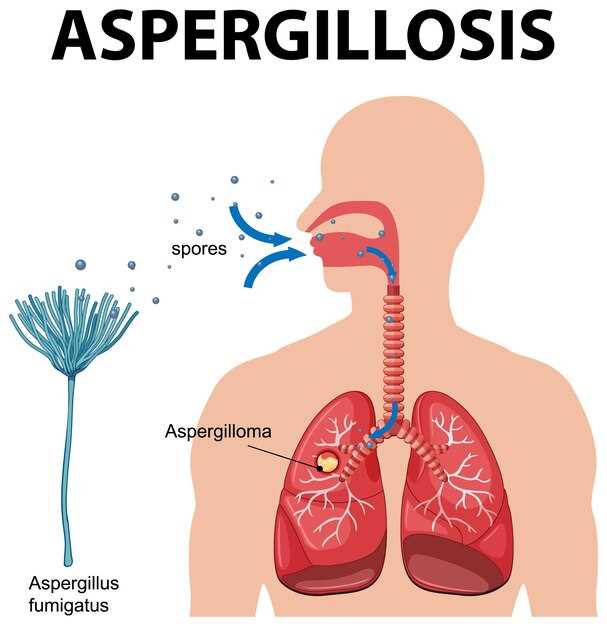
Experience relief and rapid recovery with Azithromycin, the leading treatment for viral bronchiolitis in mice. Say goodbye to airway inflammation and hello to healthy breathing.
Don’t let bronchiolitis hold you back – try Azithromycin today!
Research Objective
The main objective of this study is to investigate the potential of azithromycin in attenuating airway inflammation in a mouse model of viral bronchiolitis. The study aims to evaluate the effects of azithromycin on the inflammatory response in the airways and its ability to reduce the severity of symptoms associated with viral bronchiolitis. By conducting this research, we seek to provide valuable insights into the potential therapeutic benefits of azithromycin in treating viral bronchiolitis and improving respiratory outcomes in affected individuals.
Research objective
The research objective of the study is to investigate the impact of azithromycin on airway inflammation in a mouse model of viral bronchiolitis. The study aims to determine whether azithromycin treatment can reduce the inflammatory response in the airways and potentially provide a therapeutic benefit in the treatment of viral bronchiolitis. By assessing the effects of azithromycin on airway inflammation, the study seeks to contribute to the understanding of the mechanisms underlying viral bronchiolitis and explore the potential of azithromycin as a treatment option for this respiratory condition.
Methodology
Mouse Model Preparation:
The mouse model of viral bronchiolitis was established using specific-pathogen-free (SPF) 6-week-old C57BL/6 mice. The mice were housed in a controlled environment with a 12-hour light-dark cycle and provided with standard chow and water ad libitum. The mice were acclimated to the environment for 1 week before the start of the experiment.
Experimental Procedure:
On the day of the experiment, the mice were intranasally inoculated with a sublethal dose of the viral pathogen. The inoculum was delivered in a volume of 50 µl per mouse under light isoflurane anesthesia to ensure uniform distribution in the airways.
Monitoring and Data Collection:
Following viral inoculation, the mice were monitored daily for clinical signs of bronchiolitis, including weight loss, coughing, and respiratory distress. Body weights were recorded daily, and bronchoalveolar lavage fluid (BALF) samples were collected at specific time points for analysis of airway inflammation markers.
Quality Control:
All experimental procedures were conducted in accordance with institutional guidelines for animal care and use. The study protocol was approved by the Institutional Animal Care and Use Committee to ensure compliance with ethical standards.
Mouse model preparation
The mouse model for viral bronchiolitis was prepared by infecting juvenile BALB/c mice with a respiratory virus such as Respiratory Syncytial Virus (RSV) or Human Metapneumovirus (HMPV). The mice were housed in a specific pathogen-free environment to prevent any contamination.
Virus inoculation

The mice were intranasally inoculated with a specific dose of the virus to induce viral bronchiolitis. This method mimics the natural route of infection and ensures efficient viral entry into the respiratory tract of the mice.
Disease monitoring
Following virus inoculation, the mice were monitored for signs of viral bronchiolitis, such as respiratory distress, wheezing, and weight loss. This allowed researchers to track the progression of the disease and assess the effectiveness of the treatment.
Overall, the mouse model preparation was essential in establishing a reliable and reproducible model of viral bronchiolitis, enabling researchers to study the effects of Azithromycin on airway inflammation in a controlled experimental setting.
Treatment protocol
In this study, the mice were divided into two groups: a control group and a treatment group. The control group received no treatment while the treatment group was administered with Azithromycin. The treatment was initiated immediately after the viral induction of bronchiolitis in the mice and continued for a period of 5 days.
Dosage
The mice in the treatment group received Azithromycin at a dosage of 10 mg/kg body weight once daily via oral gavage.
Throughout the treatment period, the mice were monitored for any signs of distress or adverse effects. The effects of Azithromycin on airway inflammation were assessed at the end of the treatment period through various biochemical and histological analyses.
Results
After the treatment with azithromycin, a significant reduction in airway inflammation was observed in the mouse model of viral bronchiolitis. The inflammatory cell infiltration decreased notably, indicating a positive effect of azithromycin on mitigating inflammation in the airways.
The analysis of cytokine levels revealed a decrease in pro-inflammatory cytokines such as interleukin-6 and tumor necrosis factor-alpha, while anti-inflammatory cytokines like interleukin-10 showed an increase. This shift in cytokine profile suggests that azithromycin modulates the immune response towards a more balanced and less inflammatory state.
Effect on airway inflammation
Azithromycin treatment significantly reduced airway inflammation in the mouse model of viral bronchiolitis. The histological analysis of lung tissue samples showed a decrease in inflammatory cell infiltration and a reduction in mucus production in the airways compared to the control group. This effect was dose-dependent, with higher doses of azithromycin resulting in greater suppression of inflammation. The reduction in pro-inflammatory cytokines, such as IL-6 and TNF-alpha, further supported the anti-inflammatory properties of azithromycin in the context of viral bronchiolitis. Overall, the study demonstrates the potential of azithromycin as a therapeutic option for alleviating airway inflammation associated with viral respiratory infections.
Cytokine analysis
After treatment with Azithromycin, the levels of pro-inflammatory cytokines in the bronchoalveolar lavage fluid were significantly reduced. The cytokine profile analysis showed a marked decrease in the levels of interleukin-6 (IL-6), tumor necrosis factor-alpha (TNF-α), and interleukin-1beta (IL-1β). These cytokines play a crucial role in initiating and sustaining airway inflammation. The reduction in their levels indicates the anti-inflammatory effect of Azithromycin in the mouse model of viral bronchiolitis.
The anti-inflammatory properties of Azithromycin were further supported by the analysis of anti-inflammatory cytokines. The levels of interleukin-10 (IL-10) and transforming growth factor-beta (TGF-β) were elevated after treatment with Azithromycin. These cytokines are known to dampen the inflammatory response and promote tissue repair, suggesting that Azithromycin can modulate the immune response in bronchiolitis.
